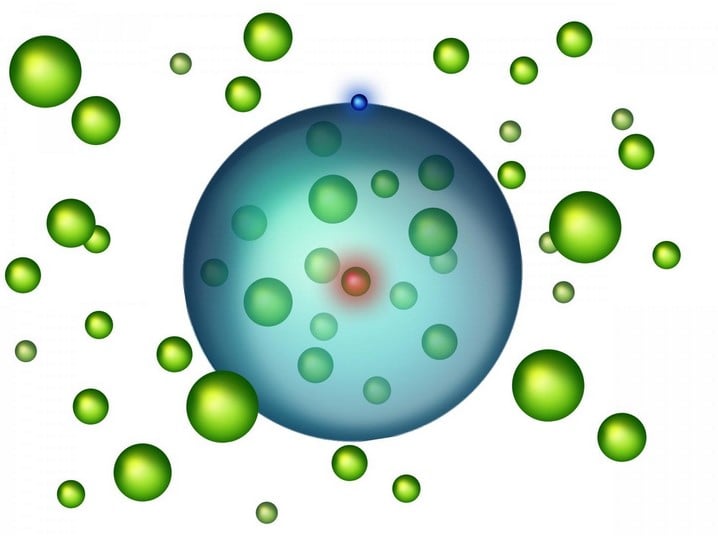Every so often, scientists make a discovery that surprises them, and this latest one is a whopper. Scientists with the Vienna University of Technology announced today that they’ve discovered a giant atom packed with other atoms, and yet, it still has room for more atoms to be shoved inside.
Typically, atoms contain a nucleus and an electron, but the scientists considered why there couldn’t be additional particles inside them as well. After all, if the electron has plenty of room as it orbits the nucleus inside the atom, theoretically, more particles could be added. Armed with this theory, the scientists were able to create a giant atom filled with “ordinary” atoms which then “form a weak bond, creating a new, exotic state of matter at cold temperatures,” which they call “Rydberg polarons.”
To create their giant atom, the scientists had to do so in extremely cold temperatures. They combined Bose-Einstein condensates with Rydberg atoms for their research. Bose-Enstein condensates are a state of matter that atoms create when they are near-absolute-zero temperatures. Rydberg atoms are those in which one of the electrons is excited and made to orbit its nucleus at a wide berth.
Vienna University scientists worked with a team at Houston, Texas’ Rice University to carry out their experiments. Using a laser, they found that they were able to convert one of the atoms in the condensate into a Rydberg atom by exciting its electron. Upon exciting the atom’s electron, its orbit became much greater than the distance between the pair of atoms in the condensate. The scientists then formed the giant atom by getting the excited electron to orbit multiple atoms in the Bose-Einstein condensate in addition to the nucleus it was originally orbiting before they began their experiments.
Researchers explained in a press release that because these atoms have no electric charge, they don’t exert much of a force on the electron that’s orbiting them. Interestingly though, the little bit of force they did exert was just enough to reduce the energy given off by the giant atom and also trigger weak bonds to be formed among the atoms inside the system. The bond that’s created is actually weaker than the one created between crystal atoms. As a result, the giant atom or Rydberg polarons can only be seen when temperatures are extremely low.Researcher Shuheu Yoshida described the giant atom as “a highly unusual situation.”
“Normally, we are dealing with charged nuclei, binding electrons around them,” Yoshida said. “Here, we have an electron, binding neutral atoms.”
The researchers worked with strontium atoms for their research, and they estimate that up to 170 extra strontium atoms could be packed into the giant atom. The amount of atoms that are packed inside depends on the radius of the electron’s orbit around the nucleus of the Rydberg atom and also the density of the condensate.
The scientists published their findings in the journal Physical Review Letters.”





